- Home
- Arthur C. Clarke
Firstborn to-3 Page 12
Firstborn to-3 Read online
Page 12
Paula said it was a “spiral canyon,” one of many gouged into the ice cap. She pulled up an image of the whole cap, taken from space in the summer, when the dry ice snow wasn’t there to obscure it.
The ice cap looked like a twisting storm system, with those spiral canyons twisting in from the edge and reaching almost to the pole.
It was astounding, like nothing Bisesa knew of on Earth. But after her jaunt across the solar system there wasn’t much wonder left in her soul.
As they drove on the snow grew deeper, until they were driving along a path between two walls of snow heaped up maybe two meters deep. The snow looked compact, harder than snow on Earth, denser maybe.
She was relieved when she saw a cluster of lights ahead, and the rounded shoulders of living modules.
A row of green lights stretched off into the distance, as if they were driving down a runway. As the rover rolled closer Bisesa saw that the lights were on poles maybe four meters high, perhaps to keep above the snow. Glancing back, she saw that looking the other way the lights were bright white — so, in the murk of a Martian blizzard, you could always tell if you were heading toward or away from the base.
The structures that loomed out of the dark, lifted up off the ground on stilts, were not domes but flattened pie-shapes, round above and below. They were colored bright green, and huddled close together, interlinked by short tunnels. Bisesa saw that these big hab modules were in fact mounted on wheels, and had been tied down to the ice by cables fixed to pitons. They were like monstrous caravans, she thought.
As the rover neared the station, the walls of dry ice snow thinned away, until the rover was driving over an ice surface almost clear of snow but covered with an open black mesh. Heating elements, perhaps, designed to keep off the dry ice. The rover nuzzled up to a low dome at the foot of one of the stilts. Two station vehicles were already parked here, heavy-looking, smaller than the rover from Lowell.
Paula led them through the hatch, and Bisesa found herself facing a staircase, roofed over with blue-green plastic, that evidently led up to the nearest of the stilted habs. Alexei’s suitcase couldn’t climb the stairs and had to be hauled up on a plastic rope.
At the top of the stairs, the station crew were waiting for the newcomers. There were four of them, two women, two men, Mars-spindly in the limbs though a little heavy in the belly. All were pretty young, Bisesa guessed, none older than forty. Their coveralls were clean but well-patched, and they all smelled faintly greasy.
None of them had cheek ident tattoos.
They stared at Bisesa, and stood a little too close together.
One burly twenty-five-year-old came forward and shook Bisesa’s hand. “You’ll have to forgive us. We don’t get too many visitors up here.” He had a big, blotchy drinker’s nose, grimy black hair pulled back into a ponytail, and a mass of curly beard. His accent was indistinct, like American but laced with longer European vowels.
“You’re Yuri, right? You were on the ice bike.”
“Yes. We exchanged a wave. Yuri O’Rourke. Resident glaciologist, climatologist, what have you.” Briskly he introduced the rest of the base crew: Ellie von Devender, a physicist, Grendel Speth, a doctor-biologist, and Hanse Critchfield, an engineer responsible for power, transport, and essential systems, but also a specialist in the drilling rig, the base’s main scientific function. “Although we all multitask,” Yuri said. “We’re all trained paramedics, for instance…”
Ellie von Devender approached Bisesa. The physicist was maybe thirty, stocky in her jumpsuit, with her hair tightly pulled back. She wore thick-rimmed spectacles, an affectation that hid her eyes and made her look hostile.
Bisesa said curiously, “I guess I would have expected a glaciologist, a biologist. But a physicist?”
Ellie said, “The glaciology is the reason the base is here, along with Grendel and her wet lab. I am the reason you’re here, Ms.Dutt.”
Yuri clapped Bisesa on the shoulder. “Come see the place.” He led them briskly through the hab. “This is what we call Can Six,” he said. “The EVA port…”
Can Six was a bubble of fabric, the walls colored a bright sea-green with an eye-deceiving wave pattern. It had a honeycomb floor that straddled its interior at the widest point, and looking down Bisesa could see stores stacked up in the underfloor space.
There were no spacesuits in evidence, but there were odd hatches in the walls that might have led to externally-mounted suits, like the rover’s. Equipment was stacked up here, what looked like spare parts and other gear for the rovers, and also a small science lab, and a medical area, a single bed surrounded by equipment, sealed off from the rest by a zippered plastic curtain. It was dark, and felt cold and dusty, as if not much used.
Yuri hurried them through a small airlock to another module:
“Can Five, science,” he said. Here there was another, more comprehensive lab suite, and a larger hospital area, and what looked like a small gym. It was brighter, with glowing panels plastered to walls that seemed to be decorated with scenes of mountains and rivers.
Bisesa murmured to Myra, “Why two lab suites, two medical bays?”
Myra shrugged. “To avoid contamination maybe. You come in from EVA, and can process your samples and treat injuries without breaking the seals to the rest of the base.”
“Contamination of the crew by Martians?”
“Or of Martians by the crew.”
In Can Five, Grendel Speth, small, neat, slim, her black hair speckled with gray, briskly took blood, urine, and cheek-swab samples from each of the visitors. “Just so the station can keep you healthy,” she said. “Testing for allergies, nutritional genomics, that sort of thing. Our food comes from freeze-dried stores from Lowell, and homegrown vegetables from our garden. We’ll add supple-ments to make sure your specific nutritional needs are met. You won’t even know they are there…”
Now Yuri hurried them through a third module — Can Three, evidently a sleeping area, divided up into pie-slice bedrooms, dark, evidently not used. They came to another module, Can Two.
Bizarrely this module had been fitted out to simulate a city-center hotel called the “Mars-Astoria.” But many of the internal partitions here had been torn down to give a more open, shared space, though the core section was dedicated to a small galley and a shower-toilet.
There were four beds in this round space, with small cupboards and chairs beside them, all of them cluttered with clothes and other gear. Softscreens had been plastered over the unregarded urban landscape, cycling through what looked like personal images of families, pets, domestic landscapes.
Myra said curiously, “You’re not using this as the makers intended, are you?”
Yuri said, “Wells was built for ten; there are only four of us.
The nights are long here, Myra. We prefer living like this, together.”
After that, Yuri apologetically led them down another staircase to a small surface dome, and then down steps cut into the ice.
“Sorry about this. You can see we only have the four beds set up, and we’ve pretty much shut down the modules we don’t use. We generally put up visitors down here, in our radiation storm shelter… If you’re not comfortable we can open up another of the cans.”
Bisesa glanced around as she descended. The cavern in the ice was a squat cylinder, sliced up by partitions into pie-shaped seg-ments. She recognized a galley, a comms station, a shower block, a cluttered space that looked like a lab or a medical station. The place was lived-in. There were ruts in the floor around the galley and the shower block, the walls and metal surfaces looked scuffed and polished with use and reuse, and there was a faintly stale smell, of air that had been cycled too often.
Some of the cavern wall was exposed, and she saw it was decorated with an odd design, a thin band marked with faint bars and a more general meter-scale wash of dark and light. This barcode frieze wrapped itself all around the wall’s curving surface like the flayed skin of a tremendous snake.
; The room Myra and Bisesa were to share was just a truncated pie-slice, big enough for bunk beds, a table, a couple of chairs. Its back wall was ice, layered over with translucent plastic, and decorated with that odd barcode design that passed across the length of wall, from one side to the other.
As they sorted themselves out Yuri sat on the bunk. He took up a lot of space in the little room. “It’s kind of cozy up here at Wells, but we survive. Actually the polar cold doesn’t make much difference. On Mars, if you stepped outdoors at high noon in midsummer on the equator, you’d still freeze your butt off. The main issue up here is the dark — half a Martian year at a time, twelve Earth months. Polar explorers on Earth had the same challenges. We did learn a lot of lessons from those guys. Though more from Shackle-ton than from Scott.”
Myra said, “Yuri, I’m having trouble placing your accent.”
“My mother was Russian like my forename, my father Irish like my surname. I’m officially a citizen of Ireland, so of Eurasia.”
He grinned. “But that doesn’t count for much up here. Things get kind of mixed up, away from Earth.” He turned to Bisesa. “Look, Ms. Dutt—”
“Bisesa.”
“Bisesa. I know you’re here for the thing in the Pit.”
Bisesa eyed Myra. What thing? What Pit?
“But you need to know what we’re really doing here.” He passed a hand along the striped designs on the wall. The lines were faint, of irregular widths and colors. It did look like a barcode, or a spectrograph. “Look at this. This is why I came here. This wallpaper is an image of the most complete core we’ve yet been able to extract.”
Myra nodded. “An ice core from Mars.”
“Right. We drilled right down from here, from the top of the ice dome, and we got all the way down to two and a half klicks deep — Hanse Critchfield is going to enjoy showing off his rig. Of course it would have been three klicks if not for the sunstorm burning the top ice layers away.” He shook his head. “Damn shame.”
Myra ran her finger along the record. “And you can interpret this, the way they read ice cores from Earth?”
“Surely. The cap is built up layer by layer, year on year. And each year it captures a snapshot of the conditions at the time—
climate, dust, cosmic, whatever. Just as on Earth. Of course the detail is different here. In Greenland, say, you get an annual snowfall tens of centimeters thick. Here the residual water-ice layer is less than a seventh of a millimeter, annually.
“Look here.” He stood by the wall, where the long winding strip came to an end. “This is the top of the strip; the most recent layers are at the top, the last deposited, yes? This upper bit of the record was collected by the Aurora crew before the sunstorm. A few centimeters corresponds to decades in time. These fine brown stripes—” He marked them with his thumbnail. “They correspond to global dust storms. And that band corresponds to the washout Mariner 9 found when it arrived in orbit in 1971, the whole planet swathed in dust…”
On Mars, events occurring on different timescales were marked by different levels in the ice core. Ten centimeters down was to be found the trace of radiation washed over the planet by the Crab supernova a thousand years earlier. Every meter or so was a significant layer of micrometeorites, droplets of once-molten rock; every ten or a hundred thousand years Mars was hit by an object massive enough to spread debris even to the poles. And the big meter-scale striping corresponded to the most dramatic event in Mars’s current astronomical cycling, a nodding of its polar tilt that occurred every hundred thousand years.
Yuri said, “You can even find traces of Earth in this Martian ice — meteorites blasted off the home world, just as Mars meteorites find their way to the Earth.” He grinned. “I’m still looking for traces of the dinosaur killer.”
Myra studied him. “You love your work, don’t you?” She sounded envious, Bisesa thought. She always had been drawn to people with missions, like Eugene Mangles.
“I wouldn’t be stuck in this ice coffin otherwise. But we’re not concentrating any more. After what we found under the ice, nobody cares about all this stuff. The ice cap, the cores. It’s all just in the way.”
Bisesa thought that over. “I’m sorry.”
He laughed shortly. “It’s not your fault.”
Myra asked, “So what did you find?”
“You’re about to find out. If you’re done, I’m supposed to take you in to a council of war.” He stood up.
22: Approach
The Liberator sailed toward the Q-bomb, a spear of ice and fire. On the flight deck, Edna Fingal and John Metternes were in their pressure suits, helmets on, visors open.
Though it was still invisible to the naked eye, they were already
“seeing” the Q-bomb through its tug of gravity, its knot of magnetic energy, and the mist of exotic particles it emitted as it cruised through the solar system.
“It’s just as Professor Carel predicted,” John reported, scrolling through softscreen summaries. “Exactly like the spectrum you get from the evaporation of a mini black hole. Clearly a cosmological artifact—”
“There,” Edna whispered. She pointed at the window.
The Q-bomb was a blister of distorted starlight, a droplet of water rolling down the face of the heavens. Edna felt chilled to the bone actually to see this thing.
“That’s an Eye,” John reported. “A perfectly reflective sphere, a ball bearing a hundred meters across. All the classic signs: the distorted geometry, the anomalous Doppler shifts from the surface.
The radiation spectrum isn’t quite what was recorded of the Eyes found in the Trojans during the sunstorm, however.”
“So this thing isn’t just an observer. I guess we knew that already.”
“Five kilometers out and closing,” Libby said softly.
Edna glanced at John. She knew he had showered only an hour ago, but even so sweat stood out on his brow and pooled at his neck.
“Ready?”
“As I’ll ever be, cobber.”
“We’ll follow the agreed strategy. Libby, you got that? Four passes. And if anything changes—”
“We gun for home,” Libby said. “It will be just as we rehearsed.
Three kilometers to closest approach. Edna?”
“Yes, Libby?”
“History is watching.”
“Oh, Jesus,” John muttered.
23: The Pit
The four base crew, plus Bisesa, Myra, and Alexei, sat in a circle on chairs and upturned boxes in Can Two, the Hotel Mars-Astoria.
Paula, it seemed, was sleeping off the journey.
And here at the Martian north pole, under a hood of carbon dioxide snow, about as remote and secure a place as you could find in the solar system, Bisesa was told the truth at last.
It seemed a relief to Alexei as he finally revealed what various Spacer factions had discovered through various routes: that something unknown and menacing was sliding through the inner solar system. “They’re calling it a Q-bomb. Best guess remains that it is a Firstborn artifact, here to do us harm. The navy have launched some kind of mission to take it out. They may even succeed. But if not—”
“You have a plan of your own.”
“That’s right.”
Bisesa looked around the ring of faces, all of them so much younger than her and Myra — but then, Spacers were young by definition. “This is covert. You’re obviously some kind of faction.
Running around, hiding from the Earth cops. Having fun, are you?
Do you have a leader?”
“Yes,” Alexei said.
“Who?”
“We can’t tell you that. Not yet. Nobody here.”
“And you brought me here because of something you found under the ice.”
“That’s right.”
“Then show me.”
Grendel Speth, astrobiologist and doctor, faced Bisesa. “You only just arrived. You’re sure you don’t need to rest?”
Bisesa stood. “I’ve been
resting for nineteen years, and traveling for weeks. Let’s go.”
One by one the others stood, following her lead.
To reach the Pit, they would have to suit up.
They went back to Can Six, and then down another flight of steps to a small dome on the ice. Here Bisesa, Myra, and Alexei had to strip out of their coveralls. Knowing the Martian night-winter was only meters away, Bisesa felt illogically cold in her bare skin.
Doctor Grendel gave her a brisk physical check. “Aside from having your system systematically ruined in a Hibernaculum for two decades, you’re doing fine.”
“Thanks.”
Bisesa’s skin was briskly oiled. She had to don a “bio-vest,” a rather prickly waistcoat that clung to her bare skin, providing an interface to the biometric systems that would monitor her body’s performance during this jaunt. Then she put on an undersuit, bright green and clinging, with a helmet, boots, and gloves and a small backpack. This was a complete spacesuit in itself, Grendel told her, effectively pressurized by the tension of its elastic fabric, and would keep her alive for minutes, maybe an hour if there were an emergency, like a module breach.
But this undersuit was only the innermost layer in a double spacesuit design. She was going to have to climb into one of those Captain Ahab external suits.
She was walked to a small hatchway in the dome wall, which led to her outer suit, fixed to the exterior of the dome. She was helped into the suit legs first, then her arms into the sleeves, then her torso and head. Her visor was opaque. The suit was made of rigid sections; it was like climbing into a suit of armor. But the suit seemed to help her by adjusting itself this way and that as she wriggled into it; she heard the hum of servo motors. The trickiest part was getting her helmeted head through the hatch without banging it, and then interfacing it with the larger helmet structure of the oversuit.
Grendel called, “How are you feeling? These things aren’t custom-made.”
“Fine. How do I get out of it?”
“The suit will tell you when you need to know.”

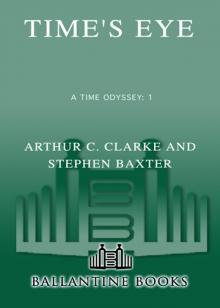 Time's Eye
Time's Eye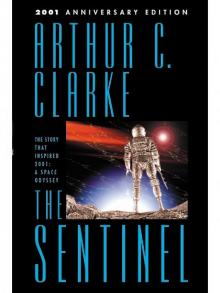 The Sentinel
The Sentinel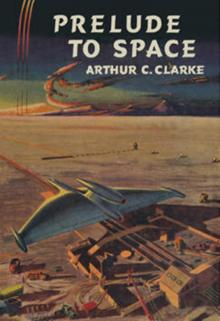 Prelude to Space
Prelude to Space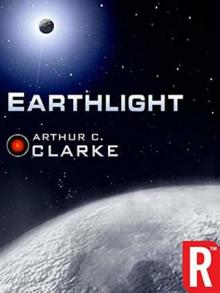 Earthlight (Arthur C. Clarke Collection)
Earthlight (Arthur C. Clarke Collection) 2001: A Space Odyssey
2001: A Space Odyssey Against the Fall of Night
Against the Fall of Night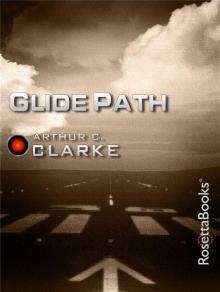 Glide Path
Glide Path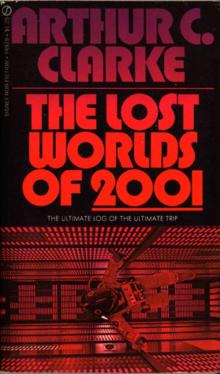 The Lost Worlds of 2001
The Lost Worlds of 2001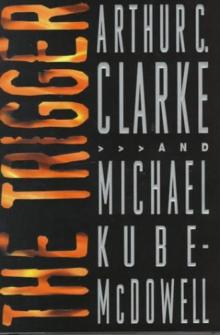 The Trigger
The Trigger Reach for Tomorrow
Reach for Tomorrow Islands in the Sky
Islands in the Sky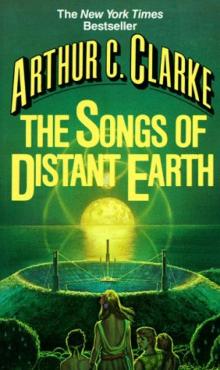 The Songs of Distant Earth
The Songs of Distant Earth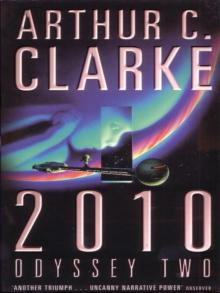 2010: Odyssey Two
2010: Odyssey Two Childhood's End
Childhood's End 3001: The Final Odyssey
3001: The Final Odyssey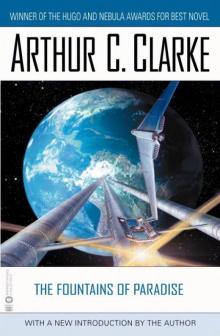 The Fountains of Paradise
The Fountains of Paradise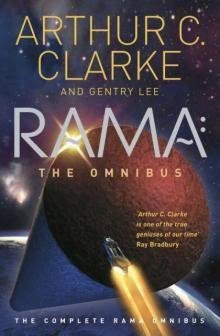 Rama: The Omnibus
Rama: The Omnibus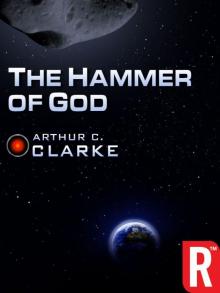 The Hammer of God
The Hammer of God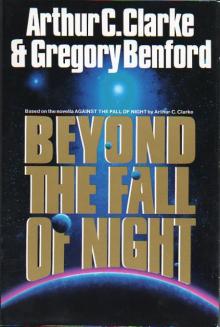 Beyond the Fall of Night
Beyond the Fall of Night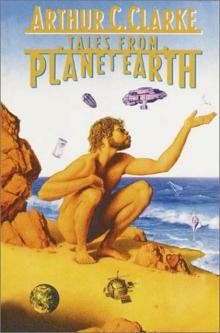 Tales From Planet Earth
Tales From Planet Earth 2061: Odyssey Three
2061: Odyssey Three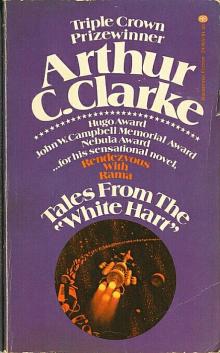 Tales From the White Hart
Tales From the White Hart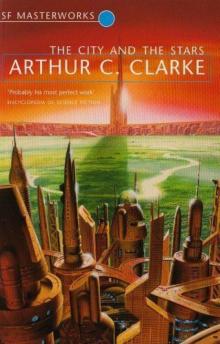 The City and the Stars/The Sands of Mars
The City and the Stars/The Sands of Mars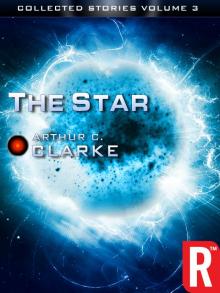 The Star
The Star Imperial Earth
Imperial Earth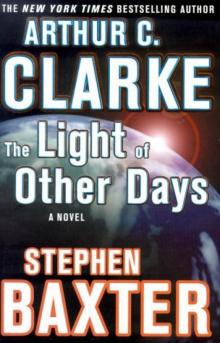 The Light of Other Days
The Light of Other Days Firstborn
Firstborn The Other Side of the Sky
The Other Side of the Sky Cradle
Cradle The Wind From the Sun
The Wind From the Sun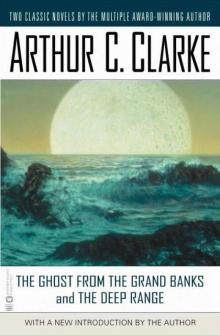 The Ghost From the Grand Banks and the Deep Range
The Ghost From the Grand Banks and the Deep Range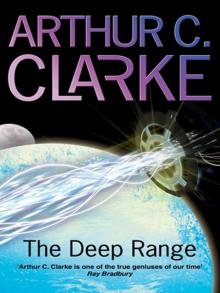 The Deep Range
The Deep Range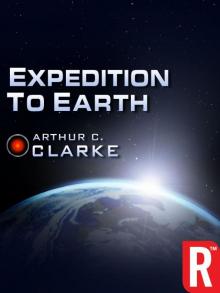 Expedition to Earth
Expedition to Earth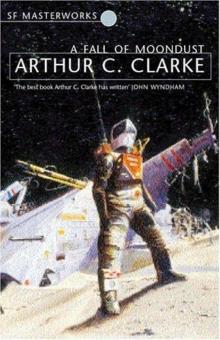 A Fall of Moondust
A Fall of Moondust Dolphin Island (Arthur C. Clarke Collection)
Dolphin Island (Arthur C. Clarke Collection) Richter 10
Richter 10 The City and the Stars
The City and the Stars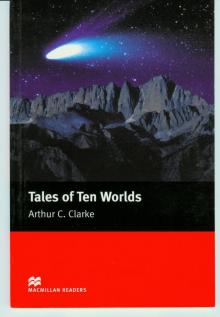 Tales of Ten Worlds
Tales of Ten Worlds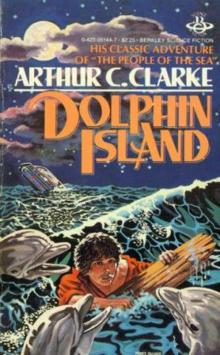 Dolphin Island
Dolphin Island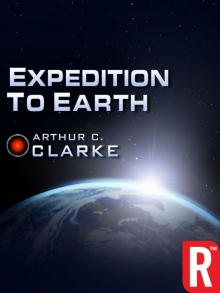 Expedition to Earth (Arthur C. Clarke Collection: Short Stories)
Expedition to Earth (Arthur C. Clarke Collection: Short Stories) Sunstorm
Sunstorm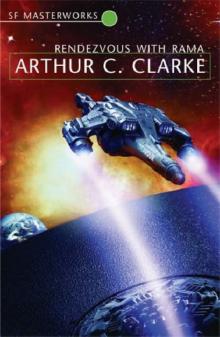 Rendezvous with Rama
Rendezvous with Rama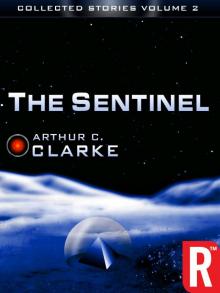 The Collected Stories of Arthur C. Clarke
The Collected Stories of Arthur C. Clarke Trouble with the Natives
Trouble with the Natives Rama Revealed r-4
Rama Revealed r-4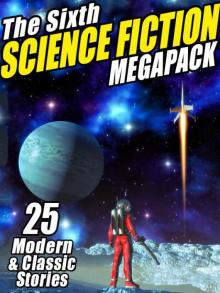 The Sixth Science Fiction Megapack
The Sixth Science Fiction Megapack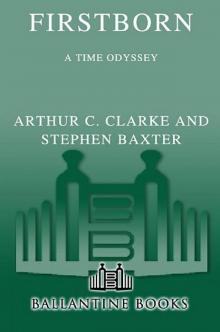 Firstborn to-3
Firstborn to-3 The Ghost from the Grand Banks
The Ghost from the Grand Banks Into the Comet
Into the Comet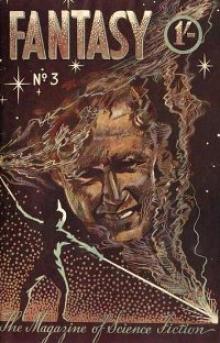 The Fires Within
The Fires Within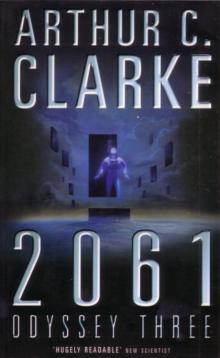 2061: Odyssey 3
2061: Odyssey 3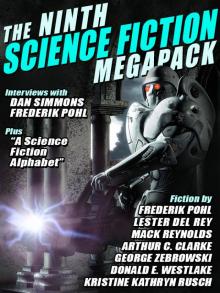 The Ninth Science Fiction Megapack
The Ninth Science Fiction Megapack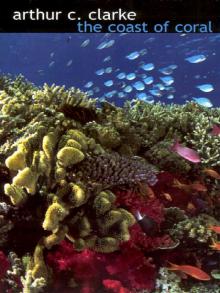 The Coast of Coral
The Coast of Coral The Ghost from the Grand Banks (Arthur C. Clarke Collection)
The Ghost from the Grand Banks (Arthur C. Clarke Collection)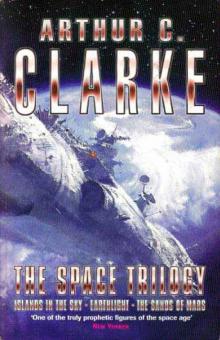 The Space Trilogy
The Space Trilogy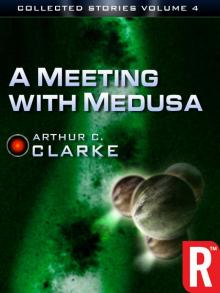 A Meeting With Medusa
A Meeting With Medusa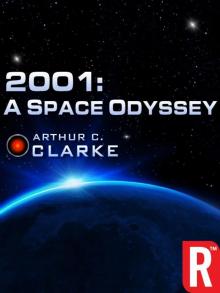 2001: A Space Odyssey (Arthur C. Clarke Collection: The Odyssey)
2001: A Space Odyssey (Arthur C. Clarke Collection: The Odyssey) Islands in the Sky (Arthur C. Clarke Collection)
Islands in the Sky (Arthur C. Clarke Collection)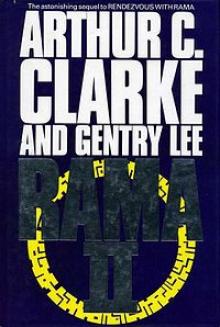 Rama II r-2
Rama II r-2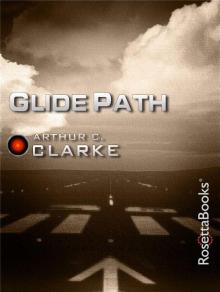 Glide Path (Arthur C. Clarke Collection)
Glide Path (Arthur C. Clarke Collection)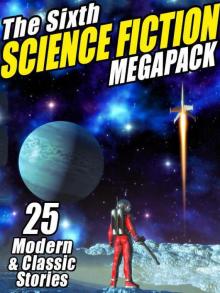 The Sixth Science Fiction Megapack: 25 Classic and Modern Science Fiction Stories
The Sixth Science Fiction Megapack: 25 Classic and Modern Science Fiction Stories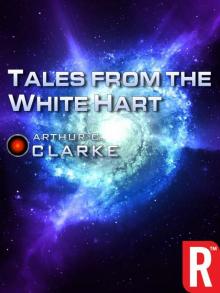 Tales from the White Hart (Arthur C. Clarke Collection: Short Stories)
Tales from the White Hart (Arthur C. Clarke Collection: Short Stories) The Reluctant Orchid
The Reluctant Orchid